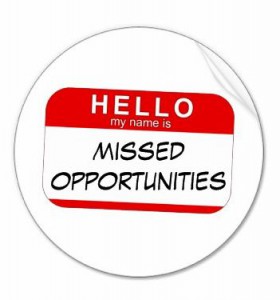Nothing is more expensive than a missed opportunity, so whether you have a Development Director or not, there are some essential tools that you should have in place to prevent missed opportunities. These pieces do not have to be elaborate or take a lot of time to develop, though some may require group input and consensus building. If you dedicate some time each week to these pieces, you could boost your fundraising success significantly in just a month.
- Case Statement — This is the outline of your organization’s story. It should answer these questions
- What is your broad goal?
- For example, when the DC Campaign to Prevent Teen Pregnancy first opened its doors, their broad goal was to reduce teen pregnancy by 50% by 2005.
- This could be your mission statement, but its more effective to distill it down to something simple like the above.
- What is the problem you are solving with your mission?
- What is your organization’s solution to the problem? Why is this the right solution?
- What makes your organization the best choice to implement this solution?
- What do you need to get funded in order to achieve your mission?
- How much money do you need to raise and by when?
- Who are your current supporters?
- What is your broad goal?
- Prospect list — Whether you are searching for individual, foundation, corporate, or government funding you need to narrow the potential universe of funders to only those that align with your mission. There are many resources for this kind of research, including The Foundation Center, Grants.gov, and the Chronicle of Philanthropy. You can also access all Foundation Center materials at one of their regional libraries, which are listed here. Make sure to record the following information in your prospect list:
- Name and location of foundation
- Mission/purpose
- Relevant program areas
- Application process and deadlines
- Size and types of grants
- Board list
- Staff list
- Connection to your organization’s work
- Pipeline tracking tool — Once you have a strong prospect list, you should begin outreach and cultivation (that’s a whole other blog post) and track whom you’ve met and spoken with, the results of those conversations, and next steps in some kind of easily edited and shareable document. Some organizations also use this tool to estimate potential revenue based on the size of donation/grant you think it possible to receive from the potential donor/funder. This piece should be the central home for all information related to ongoing donor/funder outreach. It’s critical to ensure that you are on track with all of your follow up and that you and other members of your team are not duplicating effort.
- Grants calendar — As you begin to build relationships and receive grants, you will need a way to track deadlines for reports, renewals, and stewardship activities (again, a whole other blog post). This can also be a simple document created in Word or Excel that tracks all of your current donors/funders, when the next deadline is for reports and for renewal conversations and asks/grants. There can also be some brief notes about strategy or approach with the donor/funder based on previous conversations and on the organization’s evolving strategy.
With these four basic tools in place, you will set yourself up for fundraising success and never miss another opportunity!

